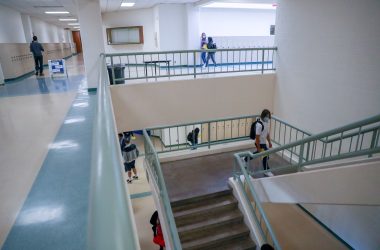
FLORA — An apple tree has been found near Flora.
That may not seem significant, except for the fact that the apple on that tree was previously believed to have gone the way of the dodo or the Tasmanian tiger.
The Kay apple, a multicolored fruit, has been growing on a tree in Flora. It was harvested in the fall of 2020 and since identified as a Kay, which had been considered a “lost” apple. The Temperate Orchard Conservancy and the Lost Apple Project announced the finding in late May.
It was one of seven varieties of the fruit believed to be lost or extinct but that was recently rediscovered. All told, the two groups have found 29 types of previously “lost” apples.
The seven apples — the Almota, Carlough, Eper, Iowa Flat, Ivanhoe, Kay and Steptoe — were collected by the LAP last fall and identified by the TOC.
Flora resident Roger Long knew of the apple growing on a tree at the home of his neighbor, Ed Spillar.
He said the climate in Flora, along with a lack of irrigation there, doesn’t allow for many types to fare well.
“It’s a dry, cold area. There’s not many varieties out there,” he said. “You go to Home Depot and buy a tree, they won’t do well there.”
There were two trees on Spillar’s property, however, that were. One of the trees was a Wolf River apple. The other was the mystery fruit.
“They didn’t look like the apples you buy in the store,” he said. “When I saw the Heritage Apple Project I got a hold of David. … I started talking with David more, and found out there are a lot of heritage apples that are well adapted to this (climate).”
“David” would be David Benscoter, the committee leader and founder of the project, which according to its Facebook page is part of the Whitman County Historical Society in Washington and “seeks to identify and preserve heritage apple trees and orchards in the Inland Empire.”
“This Kay apple apparently was a rarity,” Long said. “He had to give it to the pros to figure out what it was.”
Benscoter met with Long in October of last year to get a sample of the then-mystery apple.
“I’ll take down the GPS coordinates of the apple tree, and that is extremely important,” he said. “I put GPS coordinates on the map of every tree. Once I get home, I take a pic of the apple with the GPS coordinates, put a tag on it, the day I picked it, who I picked it from, and send in the apple” to the conservancy.
The conservancy, according to its Facebook page, is an Oregon-based nonprofit organization that “was established in March 2012 to preserve and share the genetic diversity of tree fruits that are grown in the temperate climate zones of the world.”
The organization, conservancy President Joanie Cooper said, was started to “create this safe place where we can find and maintain and continue to save and share these lost apples. That’s who we are.”
So why find and preserve apples when there already are numerous varieties out there today?
“The old ones that we are looking for, we don’t know what they have to offer,” Cooper said. “There were 12,000 or 14,000 at the turn of 1900. You never know what that apple can offer to you. Can it prosper in a dry climate? A wet climate? Can it withstand disease (more readily)?”
When the conservancy receives an apple specimen, as it did with the Kay, it’s analyzed by experts who compare its traits to what it has in its database, which includes U.S. Department of Agriculture notes on apples dating back more than 100 years.
“We look at it. We have a big database on the computer of looking at others it is similar to. We break them down into 30 or 40 different categories,” Cooper said.
Some of those categories, she said, include when in the season it grows, whether it has a sweet or tart taste, its shape, and much more.
“There are so many aspects of the apples before you say, ‘it fits in this category,’” she said.
One of the benefits the conservancy had in identifying the Kay was it was sent to the USDA in 1898, where a watercolor painting of it was done.
“It’s much better if you can look at it and find some detail — and with the Kay this is the case,” Cooper said.
The more details that can be matched up with records the better the chance the conservancy can accurately identify the fruit.
While Cooper said you can’t be absolutely certain on an ID, she said “we’re pretty confident,” the lost apple found in Flora is, indeed, a Kay.
The next step is to attempt to graft the tree to preserve it and, in years to come, pass the tree to others.
Benscoter will go back to Flora later this year to take scions — shoots from a tree — from the Kay tree back to the conservancy so it can graft them in and, hopefully, produce more scions and give the lost tree another lease on life.
Benscoter said he’ll take some grafts for the project, too.
“I generally take some other grafts and graft it to my trees and start growing it on my trees,” he said. “That is especially important for trees that aren’t really in a good location, where they don’t get enough water.”
Long said some cross-breeding of the Kay with other apple varieties could also lead to great results, and said that is another reason to keep the Kay around.
“You want to preserve something like the Kay (for) its genetic variability,” he said. “You want to cross it with something and you may get something very good.”
Long’s work isn’t stopping with the Kay rediscovery.
“I have friends that live in Flora. They are reaching out to all the people in the area who have an orchard or have a tree in their yard that has been there since 1938 (for example), and we’ll be getting in touch with those people,” he said. “There may be many things like the Kay that are lost and resurface there.”
Anyone interested can contact Long at [email protected]. Those who want to learn more about TOC van visit http://www.temperateorchardconservancy.org, or for LAP, they can contact Benscoter at [email protected].
“If they have some weird old apple tree in their front yard,” Long said, “and they don’t know what it is, we would like to talk to them.”
This story published with permission as part of the AP Storyshare system. Salem Reporter is a contributor to this network of Oregon news outlets.









